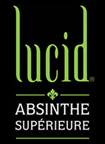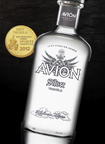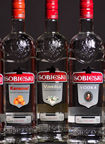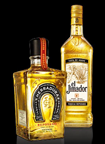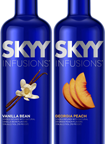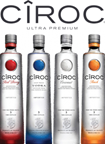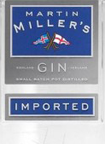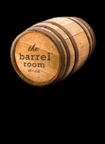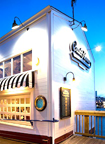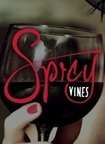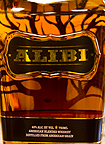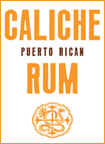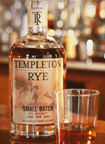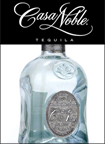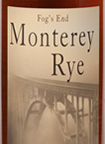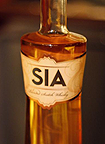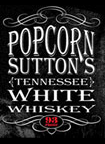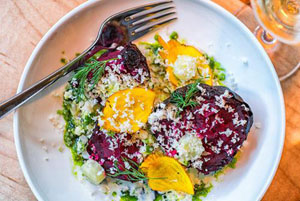
John
Fraser's Rotisserie Crisped Beets at Narcissa
By FBWorld Team
"If
you told me five years ago that I would be cooking this
way, I would not have believed you," says chef John
Fraser. He is referring to the low and slow cooking technique
he is using at Narcissa, rather than the à la minute
style he was trained in. After using Bonnet and Rotisol
rotisserie ovens years ago, the chef was inspired to draft
a menu specifically centered around low and slow cooking,
even though he didn't have any concrete plans for a new
restaurant at the time. The partnership with Andre Balazs
in The Standard Hotel proved to be the perfect opportunity,
and Fraser installed two rotisseries in Narcissa and proceeded
to cook every imaginable vegetable in them. He was particularly
happy with the way the beets came out and added them to
the menu. It has become the most popular appetizer, selling
an average of 40 portions per night.
The
beets are slow-roasted for up to five hours. Rather than
being completely soft like a cooked beet, or firm like
a pickled one, the rotisserie allows Fraser to develop
a distinct textural contrast between the dense crust and
pulpy interior in his beets. This gives the vegetables
added dimension and is somewhat evocative of the contrasts
that exist in roasted meats. The use of horseradish in
the dish, a popular addition to roast beef, is further
evocative of this, although Fraser adds pickled cucumbers,
slivers of golden baby beets, and sprigs of dill to brighten
the palate.
Here's how Fraser cooks his beets:
The beets, like much of the produce at Narcissa, come
from Locusts on Hudson, the farm owned by hotelier/restaurateur
André Balazs. They receive a thorough scrubbing
before they are placed in a large basket.
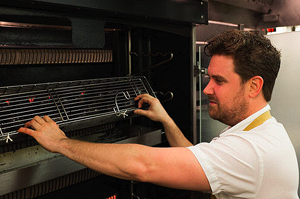
The basket attaches to the Rotisol rotisserie.
The beets cook for around five hours.
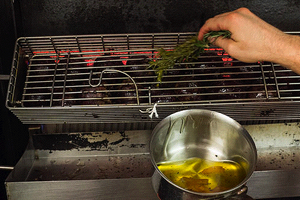
During the cooking process, the beets are basted with
orange oil. Fraser uses thyme as a brush.
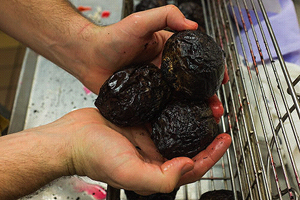
After five or so hours, the beets are finished and allowed
to cool to room temperature. They are never refrigerated.

The beets are served with a bulgur salad made of bulgur
wheat, cucumber, Granny Smith apples, and white wine vinegar.
They are also dressed with pickled cucumber cores, golden
baby beets, and a horseradish cream.
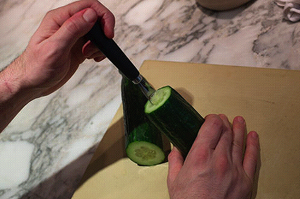
Fraser uses a marrow scoop to core cucumbers. The core
is slivered and pickled, while the rest is diced and tossed
into the bulgur salad.
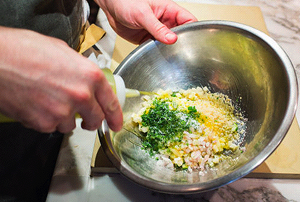
Mixing the bulgur salad.

Fraser isn't afraid to admit that he couldn't concoct
a superior substitute to Gold's for use in the creamed
horseradish upon which the beets are served. The chef
notes: "I tried using fresh horseradish, juicing
it, pickling it....nothing was better than Gold's. It
needs to be considered an ingredient in and of itself."
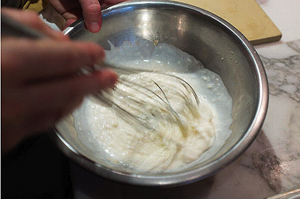
The horseradish is blended with crème fraîche.

The beets are grilled over direct heat when an order is
placed.

Once grilled, the beets are halved, revealing the distinct
textural contrast between the interior and the crust.
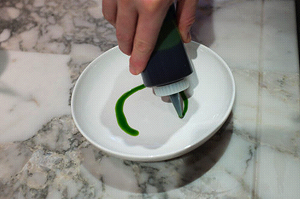
Plating begins with a garnish of dill oil.
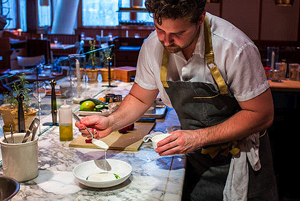
Next, the horseradish cream is added.
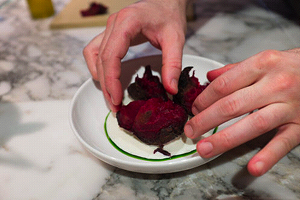
The beets are arranged on the plate.
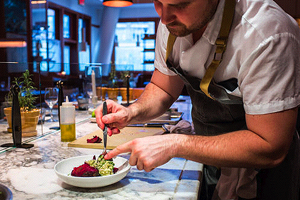
Next, the bulgur salad is layered on top.
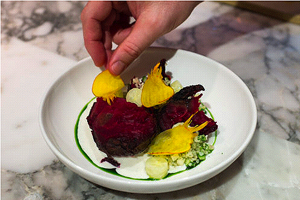
Fraser adds pickled cucumber cores and slivers of raw
golden baby beets.

Followed by some sprigs of fresh dill.
As a final flourish, fresh horseradish is grated on top
of the dish.
Ready for service.
Rotisserie
crisped beets, bulgur salad, apples, and creamed horseradish.
By Nick
Solares courtesy of www.Ny.eater.com
[All
photographs by Nick Solares]
All
Coverage of Narcissa [~ENY~]
http://ny.eater.com/tags/narcissa
For
the original click
here.

|





















